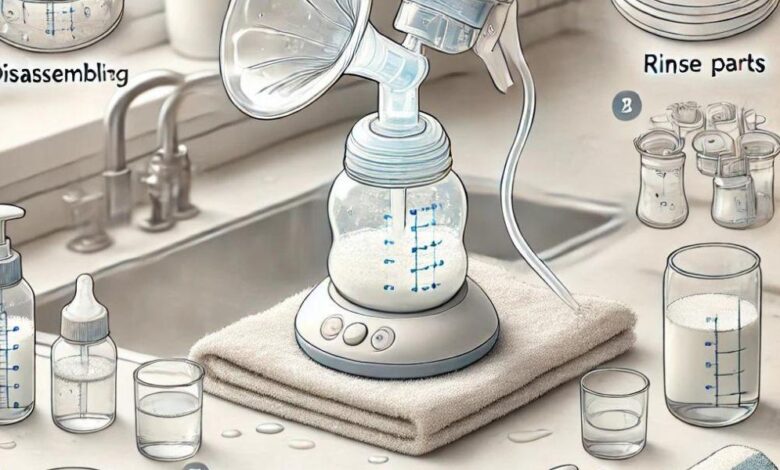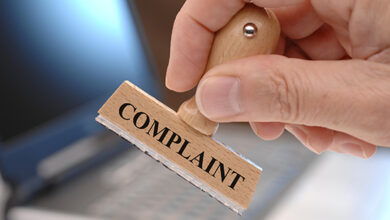Essential Tips for Cleaning Your Breast Pump: A Complete Guide for New Moms

Properly cleaning your breast pump is crucial for the health and safety of your baby. It prevents bacterial contamination, ensures the longevity of the pump, and maintains its efficiency. This comprehensive guide will provide a detailed, step-by-step approach to cleaning your breast pump, including essential tips and common mistakes to avoid. Whether you’re using a portable pump like the MomMed S21 or another model, maintaining cleanliness is key to a successful breastfeeding journey.
Why Proper Cleaning is Essential?
Keeping your breast pump clean is essential for several reasons:
- Preventing Bacterial Contamination: Breast milk is rich in nutrients, making it an ideal medium for bacterial growth if not cleaned properly. Regular cleaning prevents the buildup of harmful bacteria that can contaminate your baby’s milk.
- Ensuring the Health and Safety of Your Baby: Clean pump parts ensure that no harmful bacteria or residues come into contact with your baby’s milk. This is crucial for preventing infections and illnesses.
- Maintaining the Efficiency and Longevity of the Pump: Regular cleaning prevents buildup and damage, ensuring your pump remains in good working condition. Proper maintenance extends the life of your pump, providing reliable performance over time.
Tools and Supplies Needed
Before you start, gather the necessary tools and supplies to ensure a thorough cleaning process:
- Mild Dish Soap: Avoid using harsh chemicals or antibacterial soaps that can leave residues.
- Clean Water: Use filtered or distilled water to avoid mineral deposits.
- Brushes and Cleaning Kits: Specially designed brushes for breast pumps can reach small, hard-to-clean areas.
- Sterilizing Bags or Microwave Steam Bags: These are convenient for quick and thorough sterilization.
- Clean, Lint-Free Towels: Use these for air-drying parts.
- Storage Containers or Bags: Ensure they are clean and dry to store the sterilized parts safely.
Step-by-Step Cleaning Guide
- Disassemble the Pump Parts
Identify the Parts: Separate all detachable components of the pump. This usually includes the breast shields, valves, membranes, connectors, and bottles. For example, if you’re using a MomMed S21 or other portable pumps, make sure to disassemble according to the manufacturer’s instructions.
Check for Damage: Inspect all parts for cracks, chips, or wear. Replace any damaged parts immediately to ensure proper function and hygiene.
- Rinse Parts Immediately After Use
Initial Rinse: Rinse each part with cool water to remove any milk residue. Avoid using hot water initially as it can cause milk proteins to stick to the parts, making them harder to clean later.
Avoid Harsh Rinsing: Gently rinse to avoid damaging delicate parts like membranes and valves.
- Wash with Soap and Water
Use Mild Soap: Use mild dish soap and warm water. Harsh chemicals can leave residues that may be harmful to your baby.
Scrub Thoroughly: Scrub each part thoroughly using dedicated brushes. Pay extra attention to hard-to-reach areas to ensure no milk residue is left. Cleaning kits specifically designed for breast pumps often include small brushes that are ideal for this task.
- Rinse Thoroughly
Final Rinse: Rinse all parts with clean water to remove any soap residue. Ensure that all soap is washed off to prevent any lingering taste or odor that could affect the milk.
Inspect for Cleanliness: Double-check each part to ensure it is completely clean before moving to the next step.
- Sterilize the Parts
Sterilization Methods: Sterilization methods include boiling, microwave steam bags, or electric steam sterilizers. For example, the MomMed pump parts can be easily sterilized using microwave steam bags, which are convenient for quick and thorough sterilization.
Boiling: Boil the parts in water for at least 5 minutes. Make sure all parts are fully submerged and avoid letting them touch the sides of the pot to prevent melting or warping.
Microwave Steam Bags: Follow the manufacturer’s instructions for the correct usage time and water amount. These are a convenient option for quick sterilization.
Electric Steam Sterilizers: These devices are specifically designed for sterilizing baby products and are often more convenient for regular use.
- Drying the Parts
Air Dry: Place the parts on a clean, lint-free towel to air dry completely. Avoid using a cloth to dry the parts as it can leave fibers behind that might harbor bacteria.
Drying Rack: Use a dedicated drying rack for baby products to ensure parts dry in a hygienic environment.
Avoid Contamination: Ensure the drying area is clean and free from potential contaminants. Do not use the same towel for drying other kitchen items to avoid cross-contamination.
Tips for Effective Cleaning
- Clean the Pump as Soon as Possible After Use: This prevents milk residue from hardening and becoming difficult to remove. If immediate cleaning is not possible, store the pump parts in a sealed bag in the refrigerator to delay bacterial growth.
- Use Dedicated Brushes and Tools: Having tools specifically for cleaning pump parts ensures thorough cleaning and prevents cross-contamination with other dishes or kitchen tools.
- Regularly Inspect Parts for Wear and Tear: Check for cracks, discoloration, or other signs of damage. Replace worn or damaged parts promptly to maintain the pump’s efficiency and safety.
- Replace Parts Promptly: For example, regularly check your MomMed S21 for any signs of wear and replace parts as needed. Regular maintenance keeps the pump functioning optimally and prevents potential issues during use.
Storing Clean Pump Parts
- Use Clean, Dry Storage Containers: Store the parts in a container that is clean and dry to keep them sanitary. Avoid storing in damp or humid environments as this can promote bacterial growth.
- Store in a Cool, Dry Place: This helps to prevent bacterial growth and keeps the parts in good condition. Avoid exposure to direct sunlight or heat, which can degrade the plastic.
- Avoid Leaving Parts Exposed to Open Air for Long Periods: Prolonged exposure can lead to contamination. If you need to store parts for a longer period, consider using airtight containers or bags designed for baby products.
Common Mistakes to Avoid
- Using Harsh Chemicals or Abrasive Cleaners: These can damage the pump parts and leave harmful residues that could affect your baby’s health.
- Skipping the Sterilization Step: Sterilization is crucial for killing any remaining bacteria after washing. Do not assume that washing alone is sufficient, especially for newborns or premature babies.
- Allowing Parts to Air Dry in an Unclean Environment: Ensure the drying area is clean to prevent recontamination. Regularly clean the drying rack or towel used for air drying.
Conclusion
Proper cleaning of your breast pump, whether it’s a portable pump like the MomMed S21 or another model, is essential for the health and safety of your baby. By following the steps outlined in this guide, you can ensure your pump remains clean and functional. Establish a regular cleaning routine to keep your pump in top condition and provide safe, nutritious milk for your baby. Consistent maintenance and proper hygiene practices are key to a successful and stress-free breastfeeding journey.





